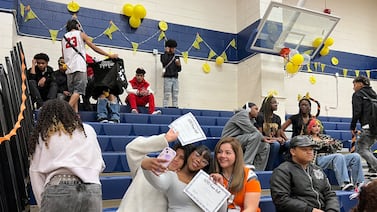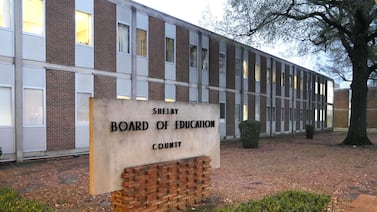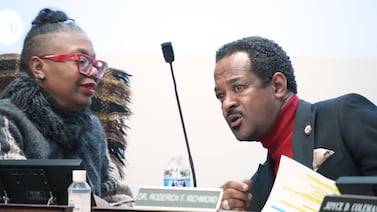It wasn’t supposed to start like this.
The 13- and 14-year-olds who make up the Class of 2024 did not expect to begin their high school careers clustered in Zoom rooms or passing temperature checks and shuffling past masked classmates at a safe distance.
The pandemic has rewritten the script of a traditional rite of passage — the beginning of the end of a long K-12 journey for students growing into young adulthood.
It is a story Chalkbeat will be following over the next several months as the 2020-21 school year unfolds. Our reporters will introduce you to a cast of ninth graders across the country trying to figure it all out in this most challenging school year.
We chose to focus on this grade for a number of reasons. For one, it’s when school truly starts to count. A student’s grades, attendance, extracurricular activities, and relationships with classmates and school staff will leave a lasting mark.
In fact, there is little margin for error.
How a student fares in ninth grade goes a long way toward determining academic, and life, success. Researchers at the University of Chicago’s Consortium on School Research found that students who failed more than one semester of a course during their freshman year almost always dropped out. Other studies have found that students struggle to maintain their grades and friendships as they transition to high school.
Many schools — including some we will feature in this series — have taken this to heart by launching ninth-grade academies and other efforts to rein in high dropout rates and steer ninth graders toward academic success. Now they face pulling it off in a pandemic.
The stakes are especially high for students of color and those whose families live in poverty, the communities hit hardest by COVID-19. As classes resume, these families face hurdles, rooted in longstanding inequities, that influence how students learn — the digital divide, food and housing instability, transportation challenges, and more.
Our first installment, which publishes Thursday, will bring you into a corner of a Memphis living room that student Jalan Clemmons has carved out as his remote classroom.
A relative newcomer to Memphis, Jalan joined students from across Shelby County Schools in logging onto school and receiving live instruction from teachers after a spring of learning lessons though paper packets and televised instruction.
The first day of school brought unexpected choices for Jalan — like whether to turn on his laptop camera and face classmates he had never met.
No matter whether students are learning at home, together in small cohorts in classrooms, or experiencing some of both, this is high school at a distance.
Students are either separated from their teachers and friends by sometimes shaky Wi-Fi signals or kept physically apart in school buildings in keeping with health department recommendations.
We hope to still bring readers close to these students — sharing their hopes, fears, victories, and setbacks in a year unlike any we’ve seen.







